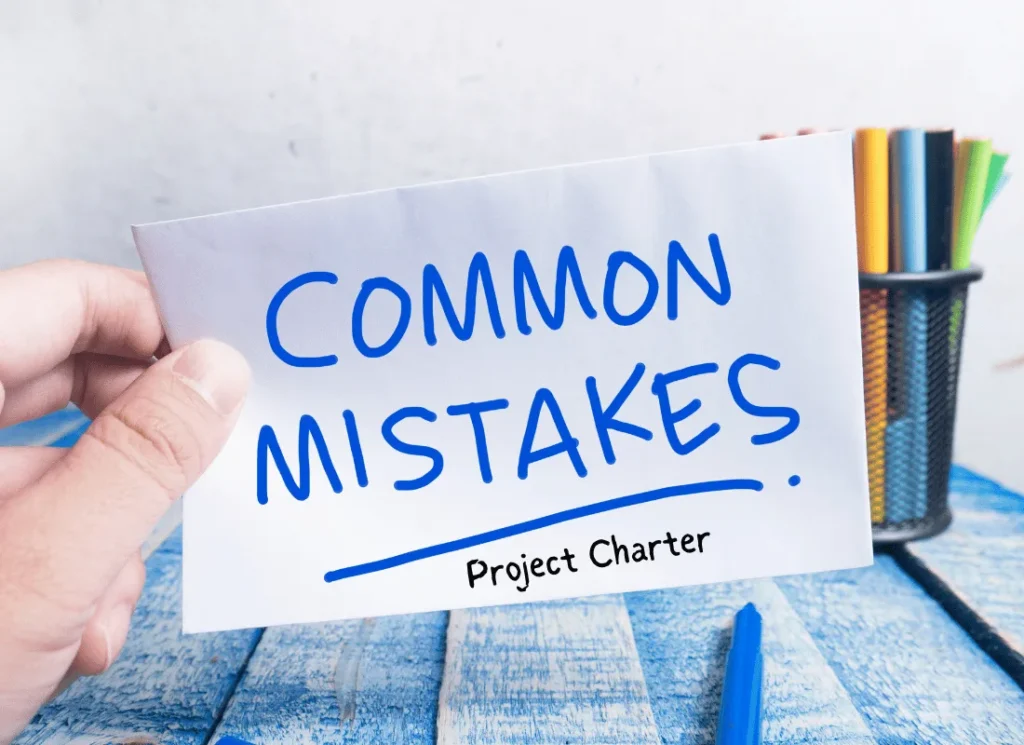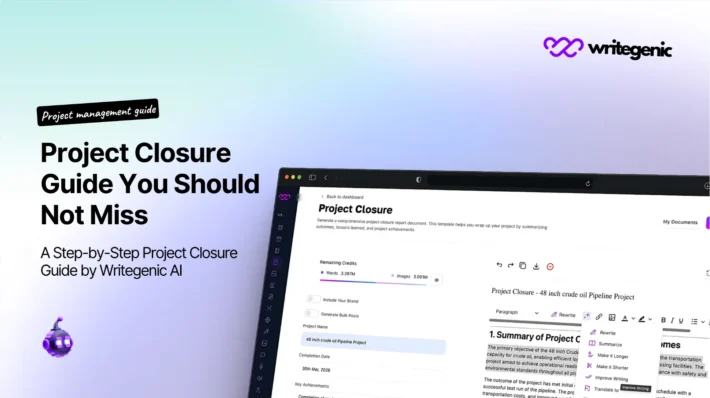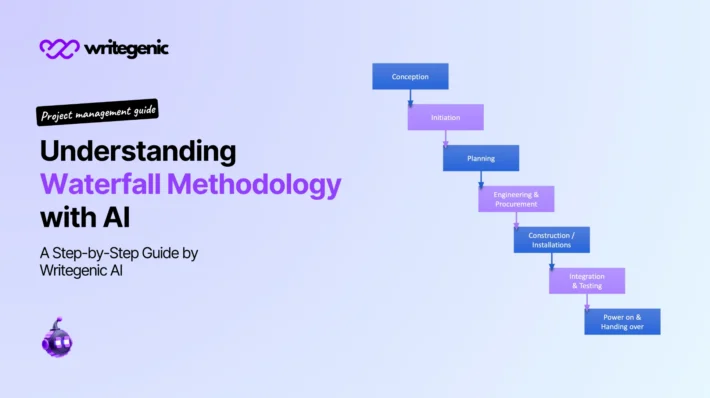6 Common Mistakes to Avoid in Project Charter Creation

Failing to pay attention to the essential details while writing a project charter can disrupt the project from its early stages.
Having a strong charter helps everyone know the objectives and work toward the same goal. Teams sometimes make mistakes early on that can prevent a project from being successful.
It explains the most common errors in project charters and how to correct them according to Project Charter PMI standards and best practices.
Table of Contents
Understanding the Purpose of a Project Charter
The main goal of a project charter is to approve a project and give the project manager the power to use company resources. It defines the scope, stakeholders, schedule, and constraints all of which are key elements of a project charter.
Failing to keep the purpose in focus results in confusion, not knowing where to go and poor agreement with others involved. A lot of the time, this mistake happens because teams start building early without planning properly.

Common Project Charter Mistakes and How to Avoid Them
Mistake 1: Vague Project Purpose
It is typical for organizations to skip defining the main reason for creating the project charter.
If the purpose of the project is not well-defined, this causes confusion and is not helpful to anyone involved. If the purpose is not made clear, it is harder to build support from stakeholders or provide the right resources.
The purpose of the project, the difficulty it aims to address and the key advantages it wants to provide should all be stated in the charter.
When you have a clearly stated purpose, it provides direction, keeps everyone moving in one direction and makes sure the effort is justified.
Mistake 2: Undefined Roles and Responsibilities
A lot of charters do not include details about who will be responsible for various tasks, causing teams to be confused.
A well-written charter makes job responsibilities clear. A practical example of a project charter should include the roles of the sponsor, manager, team leads and what their responsibilities are.
When staff have a clear picture of roles, work goes smoothly, everyone knows their duties and less confusion occurs. If this section is removed, there could be repetition of tasks or some tasks will go unattended, causing progress to slow.
Mistake 3: Ignoring Stakeholders and Collaboration Tools
When important stakeholders go unnoticed or collaboration is not fostered with technology like Asana project charter tools, everything might get out of sync.
Stakeholders are those who have interests in or are involved in the project. Should the personnel not be recognized or involved, the project might not get the proper guidance and assistance it requires.
The use of tools like Asana allows teams to track their tasks, what they need to do and meet agreed-upon deadlines.
Using these platforms allows everyone to access project data and easily monitor its progress.
Mistake 4: Overlooking Scope Boundaries
Uncertain boundaries between the project and its scope can cause significant problems.
Not defining the scope of a project results in challenges in meeting stakeholder demands or keeping changes under control.
Letting the scope grow without proper control increases the chance of objectives being delivered late or project costs exceeding budgets.
Duly establishing your scope with a detailed project planing helps ensure consistency in task alignment and achieves success in the project.
A clear project plan allows more precise project planning in the future.
Mistake 5: Missing Alignment with PMI Standards
Using unofficial guidelines rather than PMI’s standards can result in charters that are either incomplete or inconsistent.
PMI offers recognised standards and templates for creating various project documentation, including the project charter.
Following PMI standards guarantees that your charter is organized, thorough and ready for presentation.
It strengthens trust among key stakeholders and enhances how the project is controlled and organized.
Mistake 6: Failing to Communicate Importance
Many organizations take the project charter for granted and view it simply as a procedural step.
A well-defined charter guides the project by clearly connecting objectives, resources and stakeholder assumptions.
Comprehending its objective helps teams respond to challenges, collaborate more efficiently and complete projects successfully.
Ensure the charter is explained during project onsets and distributed to all relevant parties for easy access during the entire project.
Importance of Project Charter in Long-Term Success
A project charter is very important for any successful project. It outlines the entire project’s plan and helps make important decisions, bring everyone involved together and minimize potential risks. Avoiding these errors helps you start your project on sound ground and set it on the right course.
Conclusion
Paying attention to these common pitfalls helps ensure that your project meets its goals. Every aspect of the project charter contributes to its overall effectiveness. Adhering to standards like Project Charter PMI and understanding the critical role played by project charter documentation and the various applications of project charter will set your project up for long-term success.
Frequently Asked Questions
What is the main goal of a project charter?
A project charter serves mainly as approval for the project and clearly describes the objectives, limits, stakeholders and project manager’s power to use what the organization provides.
What importance do roles and responsibilities hold in a project planing?
Clean roles and responsibilities prevent misunderstandings, keep everyone answerable and boost communication within the team.
How does the Project Plan PMI framework contribute to success?
Applying the suggested guidelines in the PMI project plan makes sure the work meets professional project management norms.
Does the quality of the charter have an impact on the success of a project?
A weak charter can easily result in vague goals, poor use of resources and disagreements among stakeholders which in turn can result in delays, costs rising or the program failing.


